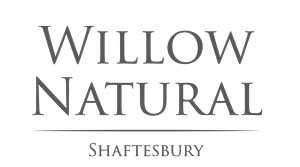Fabrics
This is Indi and Cold's Overview Of Fabrics and is very useful when referencing fabrics
Organic cotton
In 2017 we began to incorporate this material into our capsule collections. Organic cotton is grown on certified land free of toxic substances, pesticides and insecticides. Organic agriculture is based on the rotation of crops instead of using artificial fertilizers.
We use GOTS-certified cotton (Global Organic Textile Standard) which verifies and audits that the material used has been produced and processed according to the standard of organic crops, complying with environmental regulations.
Recycled cotton
The cotton is recycled by combining the leftovers from clothing manufacturing. These surplus pieces are processed to form fibres that can be woven into a new cotton fabric or combined with other textile materials.
In addition, the recycling process is kind to the environment; it does not use new cotton, dyes or aggressive chemicals since the remains are classified and grouped by colour to make the new and recycled cotton in different colours. It is also more sustainable as it avoids the processes of collection, spinning and dyeing. It costs less time, energy and money as well.
For recycled fibres we require that they have been inspected according to the Global Recycling Standard (GRS). This document verifies that the requirements for recycled content, social and environmental practices, and chemical restrictions are met.
Linen
Linen is a natural, sustainable fabric. The flax plant is very resistant to pests, does not need much fertilizer and requires less irrigation than cotton.
Among the most natural fibres, this is one of the most durable. In addition, it is a breathable fabric and thermo-adjustable, so it offers comfort in winter and keeps you cool in summer. Another quality of linen is that it gets softer with every wash.


Tencel® Lyocell is the most environmentally-friendly cellulose fibre available today. It is produced exclusively from the wood pulp of eucalyptus trees certified by the Forest Stewardship Council (FSC) and the fibre carries the Pan-European Forest Council (PEFC) quality seal. This fibre originated as the result of the need for an alternative to other processes carrying a higher cost and facing environmental problems, as well as an attempt to improve the properties of cellulose fibres.
Lyocell is impressive in its absorption of moisture, since it absorbs relative humidity depending on the temperature of the skin, always ensuring comfort. It is exceptionally soft and perfect for those with sensitive skin. Lyocell fabrics boast the comfort normally associated with cellulosic fibres combined with the additional advantage of having highly-resistant properties.
Why is it special?
Tencel® is very sustainable, as it is made only with a natural chemical substance. It is special because this natural chemical is continuously reused, minimising the environmental impact. In addition, the required use of water is minimal, a particularly important aspect in countries with strict environmental limitations, and it is more economical, both for the production costs and for those involved in the assembly of a new plant.
You can see all the Tencel garments from this season at this link.
Modal
Modal is a regenerated cellulose fibre that is made from wood pulp. The chemicals used are almost completely recycled. The difference is in the origin of the wood used and the implication of this; Modal® fabric is made of beech wood, a type of tree that grows without the need for planting or irrigation.
In addition, a lot of Modal is created with what is called Edelweiss technology, a "symbiotic" production process in which the pulp (the raw material) is produced in the same place as the Modal® fibre itself, employing a chemical process based on oxygen.
It is extremely soft and light due to the fabric’s low stiffness level and the cross section. Another important feature is that it can be mixed with other fibres using conventional machinery and can also be mercerised, increasing its dimensional stability.

